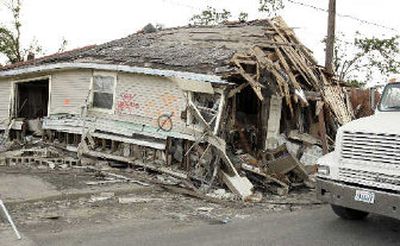A perfect storm for costlier insurance

WASHINGTON – The big hurricanes have passed for now, but the battle over insurance rates and coverage is just beginning.
Insurance industry executives and regulators are warning of significant premium hikes for homeowners’ insurance nationwide – including double-digit-percentage increases in the Gulf states – that could also spill over into other types of insurance.
After a catastrophic event causes widespread property loss, insurers by law must move money from their capital base, known as the policyholders’ surplus, to a reserve account large enough to pay expected claims. Typically, they then seek price increases to replenish capital and guard against future claims. Insurers also usually pass along to all customers their own increased costs for backup insurance, known as reinsurance.
In remarks echoed elsewhere in the industry, Evan Greenberg, chief executive of Ace Ltd., a large Bermuda-based commercial insurer, recently said Hurricane Katrina was a “market-changing event” that would require price hikes in sectors beyond property insurance. He said rates for covering the marine and energy industries were already rising. “Ultimately, the effect of these events will be felt worldwide.”
The expected price hikes would hit consumers in a marketplace where prices already were climbing at more than twice the rate of inflation. Average annual homeowners’ premiums have risen 62 percent since 1995, to $677 – an industry estimate that does not include the effects of the summer’s catastrophes. In part, the rapid cost escalation is a result of higher home prices, which force consumers to buy more insurance at higher premiums.
The record-setting season of hurricanes Katrina, Rita and Wilma and its industry-shaking consequences offer a window on the murky world of insurance pricing – where regulation, markets, litigation and politics all play a hand in a process that occurs out of sight of most consumers.
By law, prices are set by state insurance commissioners, who must approve insurers’ rates. Under the rules, price increases aren’t allowed for past losses – only future risks – but insurers plug big losses in their actuarial models to make the case that the world is becoming riskier. Generally, price increases are likely to be smaller farther away from hard-hit areas.
As a practical matter, rates for businesses are set between buyer and seller and can fluctuate sharply. Commercial property rates, for instance, jumped about 71 percent from the end of 2000 to mid-2003 before easing recently, according to Advisen Ltd., a New York-based insurance consulting company.